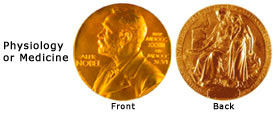A little more than a hundred years
ago, a man was reading the morning newspaper and to his surprise and horror,
read his name in the obituary column. The news paper had reported the death of the wrong person by mistake. His first response was shock. Am I really alive or am I the ghost? When he regained his composure, his next thought was to find out what people had said about him.

The obituary read, "Dynamite King
Dies". And
referred as "He was the merchant of death". The man was the inventor of dynamite
and when he read the words "Merchant of death", he asked
himself a question, "Is this how I am going to be remembered?" He introspected, got in touch with his
feelings and decided that this was not the way he wanted to be
remembered. From that
day on, he started working towards peace. His name was Alfred Nobel and he is remembered today by the
great Nobel Prize.

Just as Alfred Nobel got in touch
with his feelings and redefined his values, we should step back and do the
same.
What is your legacy? How would you like to be
remembered? Will you
be spoken well off? Will
you be remembered with love and respect? Will you be missed?

Alfred Bernhard Nobel was born in Stockholm, Sweden, on 21st October 1833. His father Immanuel Nobel was an engineer and inventor. His mother’s name was Andriette.


As he grew up,
Alfred's primary interests were in English literature and poetry. By the time
he was 17, Alfred was quite fluent in the languages English, French, Swedish, Russian, and
German. Alfred's father wanted his sons to be engineer. So he sent Alfred
abroad to study Chemical Engineering. He received much of his chemical training
in Paris.

Alfred was interested in developing
nitroglycerine as an explosive. Unfortunately, in 1864, one of his experiments
resulted in an explosion that killed Alfred's brother Emil and
several other people. But
this accident did not deter Alfred, as he continued to produce and experiment
with nitroglycerin. He was carefully trying different ways to make
Nitroglycerin more stable, so it could be used in some useful manner. And finally he found that mixing nitroglycerine with
silica (a natural element of earth) would turn the liquid into a paste which
wasn’t so volatile and would be relatively safe, could be shaped into rods to
use in blasting, and could be easily detonated.
In 1867 he patented this material
under the name of dynamite.
He also invented the lesser-known Gelignite.
Made with nitroglycerin and gun-cotton, it was much more powerful than
dynamite. But, it was dynamite that was safer and what he could mass market.
With the invention of dynamite, as well as his other inventions, Alfred Nobel
built up a number of companies and laboratories in different parts of the
world.
 |
| Alfred Nobel's Villa |
He held patents on 355 inventions and became one of the world's richest men at that time. However, he felt guilty because dynamite was later used in warfare, resulting in many people being killed. He was more interested in social and peace-related issues.
 |
| Award Ceremony |
On November 29, 1896, Alfred Nobel made out his last will and testament that donated much of his fortune to the creation of the Nobel Prize.
Nobel Prize Medals:
 |
| Nobel's Tomb |
Alfred Nobel died of a cerebral hemorrhage on December 10, 1896, at the age of 63.

















No comments:
Post a Comment